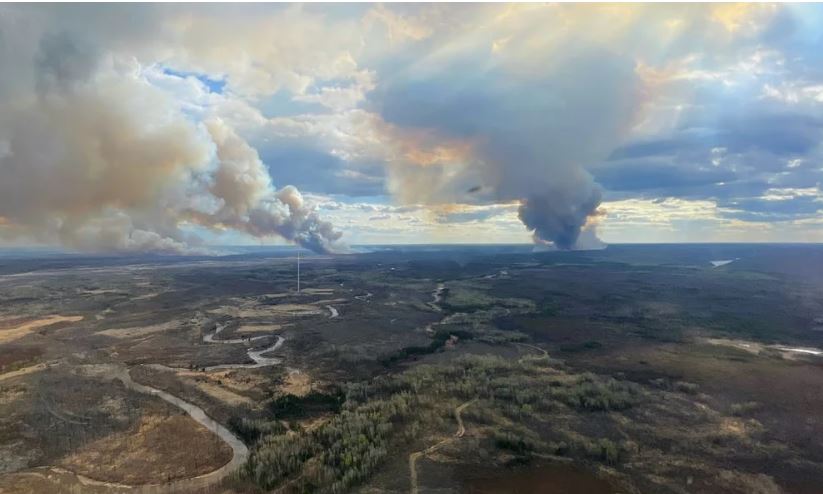Province submits thousands of pages of answers to regulators on Springbank dam
Posted Jun 14, 2019 3:56 pm.
CALGARY (660 NEWS) – Alberta’s provincial government is taking the next steps towards getting the Springbank Off-Stream Reservoir approved and built.
On Friday, Transportation Minister Ric McIver announced they have submitted a nearly 8,000-page report to provincial and federal regulators, answering their questions about the project.
“Today is about the fact that our people have worked very hard to get to this stage to answer the hundreds and hundreds of questions with 8,000 pages of documentation. I would like Calgarians and all Albertans to know that we have kept our promise,” said McIver.
https://twitter.com/Tommy_Slick/status/1139618947479699456
The government is committed to this project, as they say it will have quicker benefits than the other option proposed at McLean Creek.
The questions covered everything from costs and benefits, land use, environmental impacts, water, and traditional uses for Indigenous people.
But now that the report is submitted, it does not mean the project is ready to go.
“The timing of the regulatory process is out of our control,” McIver added.
The ball is in the court of Alberta Environment and Parks (AEP), the Natural Resources Conservation Board (NRCB), and the federal Canadian Environmental Assessment Agency (CEAA).
Those groups sent nearly 700 information requests to Alberta Transportation, which also required the Ministry to further engage with First Nations, conduct additional studies, and update modelling for the project.
Now that this report is submitted, the CEAA has 15 days to check it over, and then they have 255 days as of Friday to conduct their review.
There will also be a 30-day public comment period on the responses before they potentially ask more questions, and then draft an agency report to be considered by the federal minister for Environment and Climate Change Canada.
The provincial regulators may also have further requests which would require more work from Alberta Transportation.
Once the provincial review is complete, the NRCB would hold a hearing, followed by a recommendation to cabinet.
In all, this means the project still remains several years away from completion — as construction will take up to three years to cover for a 1 in 200-year flood event similar to what we saw in 2013.
“We look forward to the next stage of the regulatory review,” said McIver. “And we will continue to do everything in our power to ensure the environmental regulatory review process for the Springbank reservoir proceeds without delay.”
https://twitter.com/Tommy_Slick/status/1139619471197294592
The budget for the project is at $432 million, though that may change as the process continues and the design is finalized.
Further, the province still needs to acquire 80 per cent of the land needed to build it and have a budget of $140 million for those purchases.
The Springbank Off-Stream Reservoir, also known as SR1, will store flood water from the Elbow river and, along with the Glenmore Reservoir in Calgary, accommodate flood waters.
It will cover 3,600 acres of land only 15 kilometres west of Calgary, near Springbank Road and east of Highway 22.
It will also have a capacity of 77.8 million cubic metres.
Rocky View County has submitted a response to the news, praising the government for opening lines of communication, but continuing to call for analysis of “potentially superior options.”
Reeve Greg Boehlke says this does not change their opposition to the project.
“Our position is that the other flood mitigation options should see the same level of attention so that we can make the best possible choices.”
In the provincial report, it says SR1’s benefits will happen sooner because it is further through the regulatory process, while MacLean Creek’s benefits would not be expected until 8-10 years after it starts.
RELATED: McIver faces opposition on campaign promise to build Springbank reservoir
Rocky View County also believes alternate projects include initiatives in Priddis and the Tsuut’ina Nation, plus a different approach that would spread mitigation throughout the region.
McIver remained firm in the province’s support for SR1 but added there will be more consultations with Indigenous groups and other residents.
“We have gone out of our way and worked very hard to work in the best interests of Albertans, and specifically people in the Calgary and surrounding area, because those are the ones who will most directly benefit from the flood mitigation things that we’re trying to get approval for right now, so I think if we’re working in the public interest everything else is secondary,” he said. “What’s important to know is that their government cares about what they think. Their government is doing the best that they can to satisfy their needs.”
https://twitter.com/Tommy_Slick/status/1139648134064140288










